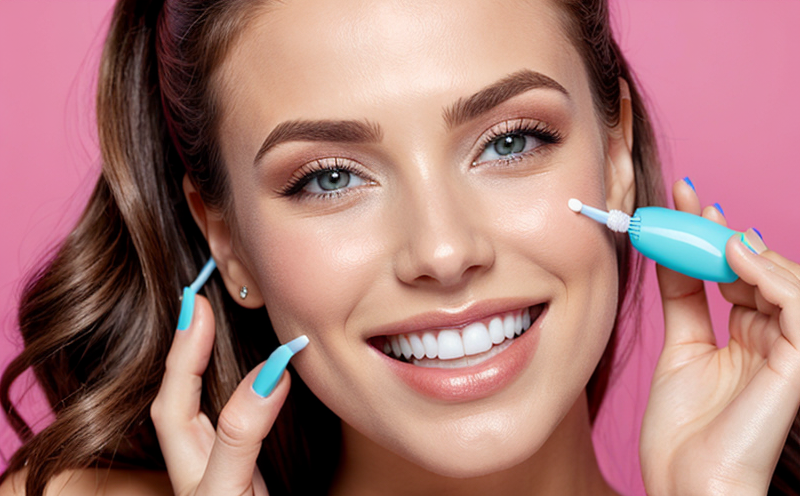Rheological Testing of Cosmetic Oral Gels
The rheological properties of cosmetic oral gels play a crucial role in determining their texture, spreadability, and overall sensory experience. Understanding these characteristics is essential for quality managers, compliance officers, R&D engineers, and procurement teams to ensure that products meet both consumer expectations and regulatory standards.
Rheology involves the study of material flow under applied stress or strain. In the context of cosmetic oral gels, rheological testing provides insights into how these materials behave during application and in use. This information is vital for optimizing product formulations and ensuring consistency across batches. By measuring shear viscosity, yield value, plasticity, and elasticity, manufacturers can fine-tune their formulas to achieve desired properties such as smoothness, ease of application, and resistance to deformation.
Shear viscosity measures the fluid’s resistance to flow under shear stress, which is particularly important for pastes and gels. Yield value indicates the minimum stress required to initiate flow, while plasticity refers to a material's ability to deform permanently without breaking. Elasticity describes how much a material can return to its original shape after being deformed.
Proper specimen preparation is critical in rheological testing. Samples should be prepared according to industry best practices and standardized methods such as those outlined in ISO 18302-4, which specifies the procedures for determining rheological properties of cosmetic products. Specimens are typically taken from freshly mixed batches or pre-formulated samples to ensure accuracy.
The choice of instrumentation is also crucial for obtaining reliable results. Commonly used devices include rotational viscometers and cone-plate systems. These instruments apply controlled stress to the sample and measure the resulting deformation, allowing for accurate determination of rheological parameters.
Once tested, the data obtained from rheological testing can be used to make informed decisions about product development and quality assurance. For instance, if a gel is too viscous, it may be difficult to apply; conversely, if it's too fluid, it might not provide the desired texture. By adjusting ingredients like thickeners or emulsifiers based on rheological findings, manufacturers can achieve optimal consistency.
Compliance with international standards ensures that products meet global safety and quality requirements. ISO 18302-4 provides guidelines for testing cosmetic products, including oral gels, ensuring uniformity across different markets. Adherence to these standards helps prevent issues related to product performance and consumer satisfaction while also safeguarding against potential legal challenges.
Applied Standards
- ISO 18302-4:2017 - Cosmetics - Determination of rheological properties of cosmetic products
- ASTM G158-18 - Standard Practice for Testing Cosmetic Products Using Rheological Methods
- EN 037:2019 - Cosmetics - Determination of rheological properties of cosmetic products
These standards provide precise protocols for conducting rheological tests, ensuring consistency and accuracy across laboratories. Compliance with these guidelines enhances credibility within the industry and supports regulatory compliance.
Customer Impact and Satisfaction
Rheological testing directly impacts customer satisfaction by influencing product texture and feel. Consumers expect products to have a consistent application experience, which rheology helps achieve through precise formulation adjustments. Properly tested oral gels not only enhance the user's sensory perception but also contribute to brand loyalty.
Additionally, meeting regulatory standards ensures that products are safe for use, thereby protecting both consumers and manufacturers from liability risks. This is particularly important in the cosmetics sector where consumer safety is paramount. By adhering to rigorous testing protocols, companies can build trust with their customers and maintain a positive reputation.
Use Cases and Application Examples
| Use Case | Description |
|---|---|
| Formulation Optimization | Identifying optimal levels of thickeners to achieve desired consistency without compromising stability. |
| Quality Control | Evaluating batch-to-batch variability and ensuring uniform product quality. |
| Development of New Products | Exploring novel ingredients or formulations that meet specific rheological criteria. |
- Testing toothpaste gels to ensure they are neither too hard nor too soft, providing an optimal brushing experience.
- Evaluating mouthwash formulas for their ability to adhere to the teeth without being overly viscous.
- Assessing gum bases used in oral care products to determine their flexibility and durability under stress.
Rheological testing is a cornerstone of product development, quality assurance, and regulatory compliance. It enables manufacturers to innovate while maintaining high standards of safety and efficacy.





